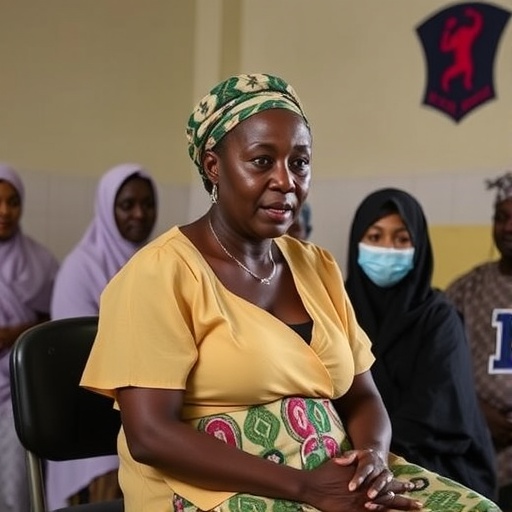For South Africa, a resilient economy must include gender equality – Prensa Latina – Latin American News Agency

Report on Ministerial Address Regarding Economic Inclusivity and Sustainable Development
1. Overview of Ministerial Address
During an inaugural address for Women’s Month, Minister Sindisiwe Chikunga articulated a strategic vision for a resilient and sustainable national economy. The Minister asserted that genuine economic strength is contingent upon inclusive growth that actively incorporates all segments of the population. The address highlighted that economic resilience involves not only withstanding crises but also adapting to change and expanding in an equitable manner.
2. Core Tenets and Alignment with Sustainable Development Goals (SDGs)
The Minister’s framework for economic revitalization is fundamentally linked to the achievement of key United Nations Sustainable Development Goals (SDGs). The central argument posits that national economic aspirations cannot be met while half of the population remains economically marginalized.
- SDG 5: Gender Equality: The address placed significant emphasis on achieving gender equality. The Minister stressed that women’s financial inclusion must transcend basic access to banking services. It requires a fundamental restructuring of economic power, directly supporting SDG 5’s mission to empower all women and girls. Key actions cited include:
- Eliminating discriminatory lending practices.
- Enacting comprehensive reforms of property rights.
- Challenging cultural norms that designate men as the sole financial decision-makers.
- SDG 8: Decent Work and Economic Growth: The call to rebuild productive systems by incorporating the potential of all citizens, especially those historically excluded, is a direct strategy for achieving SDG 8. This approach aims to promote sustained, inclusive, and sustainable economic growth by ensuring that the entire workforce can contribute to and benefit from a vigorous economy.
- SDG 10: Reduced Inequalities: By insisting on the inclusion of marginalized communities, the Minister’s speech directly addresses the core objective of SDG 10. The argument that traditional, male-centric economic models have failed to translate wealth into broad-based well-being underscores the need to reduce systemic inequalities for sustainable development.
3. A Continental Perspective on Sustainable Growth
The Minister situated the national strategy within a broader African context, noting the continent’s significant demographic growth from 283 million in 1960 to over 1.5 billion in 2024. This trajectory positions Africa as the future of global trade.
- The expanding market must be connected, nurtured, and driven through innovation to realize its potential.
- The central role of women in African trade was highlighted as a critical, yet often overlooked, component of economic success.
- The failure of historical economic models to distribute wealth equitably was presented as a clear mandate for a new, inclusive approach aligned with the Sustainable Development Goals.
1. Which SDGs are addressed or connected to the issues highlighted in the article?
The article primarily addresses issues related to economic inclusion and gender equality, which directly connect to several Sustainable Development Goals (SDGs). The following SDGs are relevant:
-
SDG 5: Gender Equality
This is the most prominent SDG in the article. The entire discourse revolves around achieving equality for women in the economic sphere. Minister Chikunga’s statements about half the population being “marginalized,” the need for “women’s financial inclusion,” and challenging “cultural norms that place men as the sole financial decision-makers” are direct calls to action for gender equality.
-
SDG 8: Decent Work and Economic Growth
The article links women’s economic inclusion directly to the creation of a “resilient,” “vigorous and sustainable economy.” The minister emphasizes that rebuilding “productive systems and structures” by “incorporating the potential of all citizens” is essential for economic strength. This aligns with SDG 8’s goal of promoting sustained, inclusive, and sustainable economic growth.
-
SDG 10: Reduced Inequalities
This goal is addressed through the focus on reducing economic disparities between men and women. The article highlights the need to empower “those who have been historically excluded” and to “reconfigure economic power.” By aiming to eliminate discriminatory practices and reform property rights, the article advocates for reducing the inequalities that prevent women from participating fully in the economy.
2. What specific targets under those SDGs can be identified based on the article’s content?
Based on the specific issues raised by the minister, several SDG targets can be identified:
-
Targets under SDG 5 (Gender Equality)
- Target 5.1: End all forms of discrimination against all women and girls everywhere. This is directly supported by the call to “eliminating discriminatory lending practices” and challenging “cultural norms” that disadvantage women financially.
- Target 5.5: Ensure women’s full and effective participation and equal opportunities for leadership at all levels of decision-making in political, economic and public life. The article supports this target by advocating for the “reconfiguring economic power” and challenging the system where men are the “sole financial decision-makers.”
- Target 5.a: Undertake reforms to give women equal rights to economic resources, as well as access to ownership and control over land and other forms of property, financial services… This is explicitly mentioned in the call for “reforming property rights” and ensuring women’s financial inclusion goes “beyond basic access to banking services.”
-
Targets under SDG 8 (Decent Work and Economic Growth)
- Target 8.3: Promote development-oriented policies that support productive activities… including through access to financial services. The article’s focus on rebuilding “productive systems and structures” and the emphasis on “financial inclusion” for women to drive a “vigorous and sustainable economy” aligns with this target.
-
Targets under SDG 10 (Reduced Inequalities)
- Target 10.2: By 2030, empower and promote the social, economic and political inclusion of all, irrespective of… sex… The minister’s core argument that the country cannot be strong while “half of its population remains marginalized” and the need to incorporate “the potential of all citizens, especially those who have been historically excluded” directly reflects the ambition of this target.
3. Are there any indicators mentioned or implied in the article that can be used to measure progress towards the identified targets?
The article does not mention specific, quantitative SDG indicators. However, it implies several areas where progress can and should be measured. These implied indicators are qualitative and policy-focused:
- Indicator for Target 5.1: The existence and enforcement of laws and policies aimed at “eliminating discriminatory lending practices.” Progress could be measured by the number of such policies enacted and the reported instances of discrimination.
- Indicator for Target 5.a: The status of legal frameworks related to property rights. Progress would be measured by the successful implementation of “reforming property rights” to grant women equal ownership and control. Another indicator would be the level of women’s access to a full range of financial services, not just “basic access to banking.”
- Indicator for Target 5.5: The degree of women’s participation in financial decision-making within households and businesses. This is implied by the goal of challenging “cultural norms that place men as the sole financial decision-makers.”
- Indicator for Target 10.2: The level of economic inclusion of women. This can be measured by tracking women’s access to financial services, property, and their participation in trade, as highlighted by the minister’s emphasis on the “central role of women in African trade.”
4. Table of SDGs, Targets, and Indicators
| SDGs | Targets | Indicators (Implied from the Article) |
|---|---|---|
| SDG 5: Gender Equality |
|
|
| SDG 8: Decent Work and Economic Growth |
|
|
| SDG 10: Reduced Inequalities |
|
|
Source: plenglish.com

What is Your Reaction?
 Like
0
Like
0
 Dislike
0
Dislike
0
 Love
0
Love
0
 Funny
0
Funny
0
 Angry
0
Angry
0
 Sad
0
Sad
0
 Wow
0
Wow
0

















































































